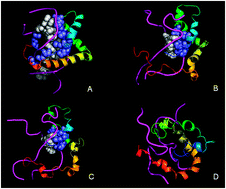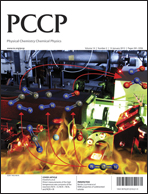Specific recognition between intrinsically disordered LEF and DNA†
Abstract
Lymphoid enhancer-binding factor-1 (LEF-1) is a sequence-specific and cell type-specific transcription factor in regulation of the human T cell receptor α enhancer. It has been shown the minor groove of DNA can bind the intrinsic disordered LEF. To get an insight into the mechanism of how the intrinsic disordered LEF specifically recognizes DNA, we have performed explicit-


 Please wait while we load your content...
Please wait while we load your content...